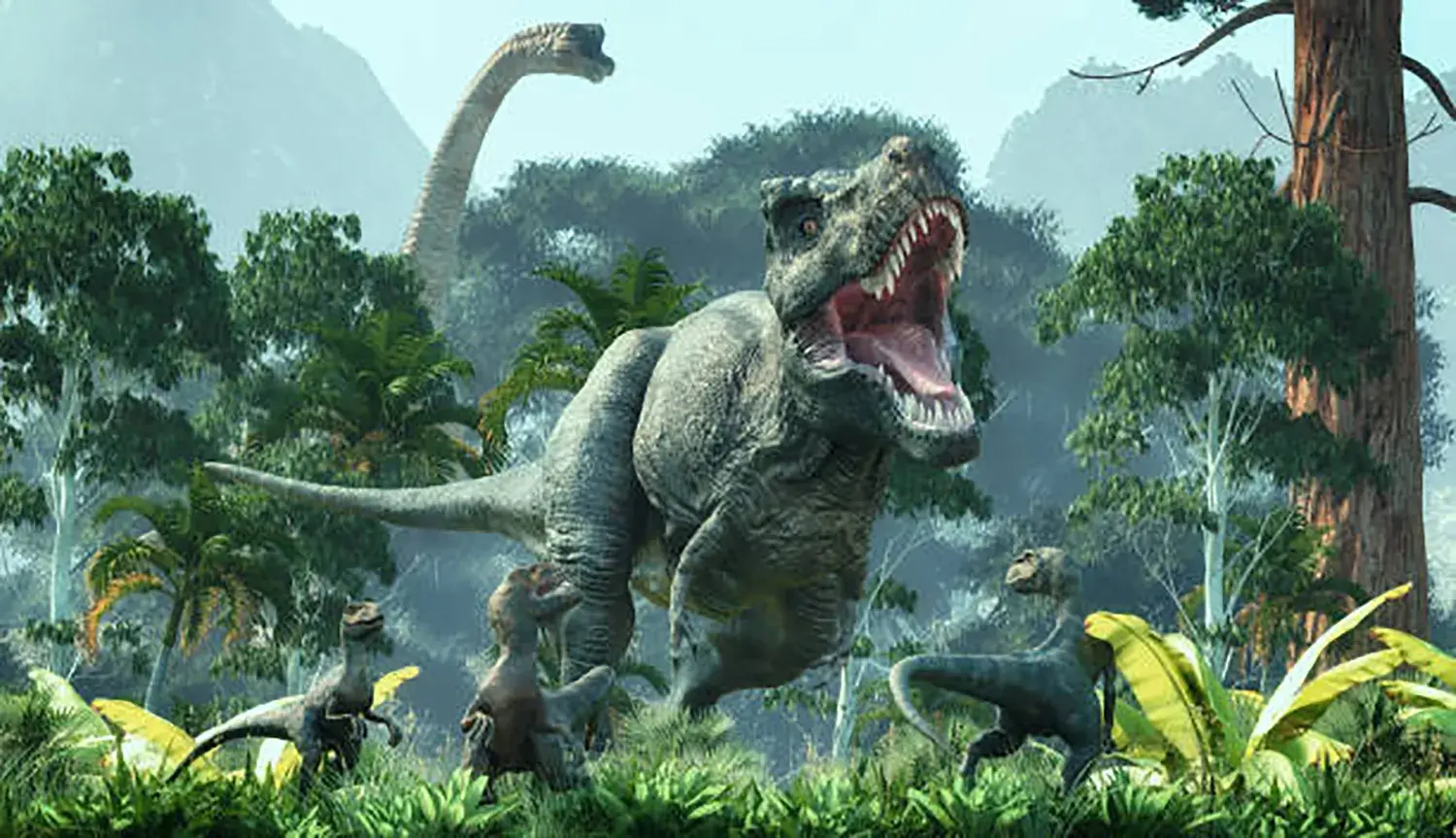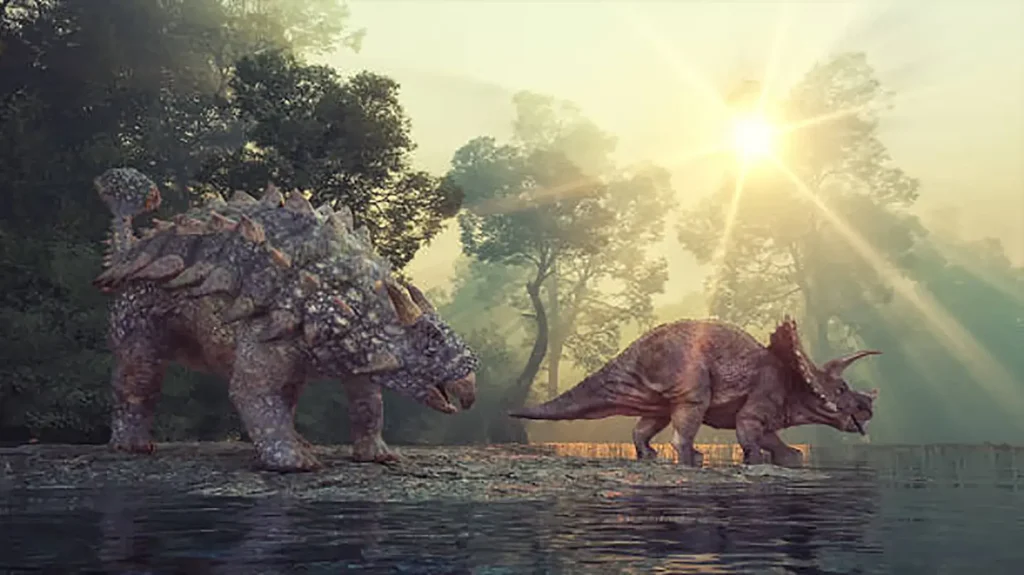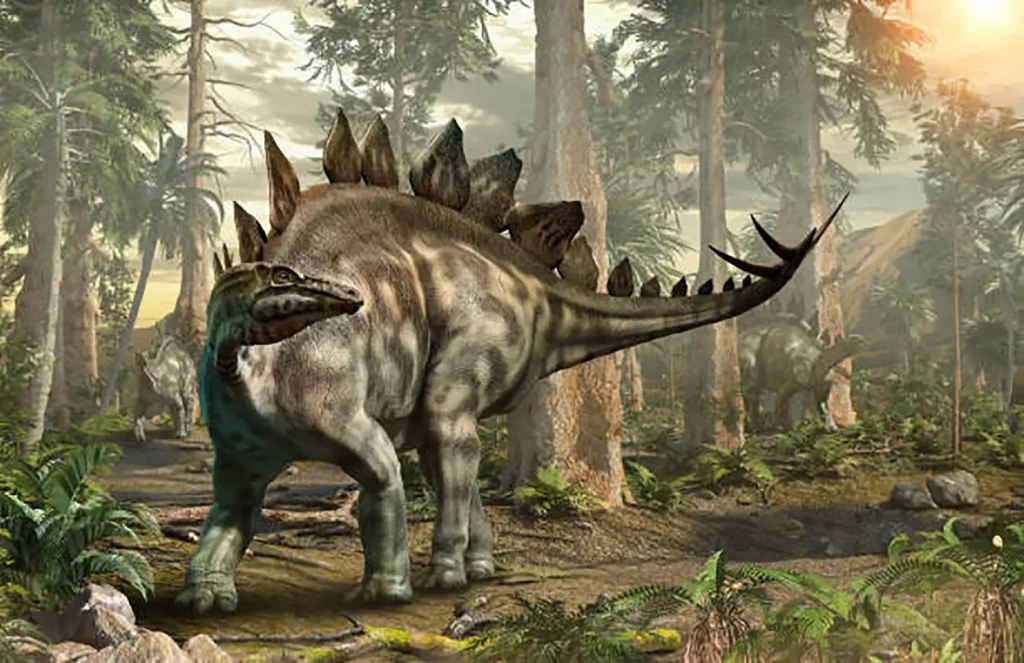The Cretaceous Period: The Peak of Dinosaur Diversity and the Age’s Dramatic End.

The Cretaceous Period (145.5 to 65.5 million years ago) was the final age when dinosaurs reached their peak in both diversity and massive proliferation.
During this long span of 80 million years, the Earth took on its current shape, and dinosaurs underwent astonishing evolution.
Continental Fragmentation and Warming
The continental breakup that began in the Jurassic continued to accelerate in the Cretaceous, leading to the formation of landmasses closer to the present-day map, such as Europe, Asia, and North America.
This diversification of the continents fueled the accelerated, localized evolution of different dinosaur species.
The Cretaceous was also one of the warmest periods in Earth’s history.
The climate became so temperate that even the polar regions supported lush, tropical plants. As ice melted, sea levels rose, and many low-lying land areas were covered by shallow seas.
The Peak of Dinosaur Diversity and Gigantism
Against a backdrop of a warm climate and abundant food, dinosaurs reached their peak of diversification.
New groups emerged, such as the Ceratopsians represented by Triceratops, and the largest carnivorous dinosaurs in history, like Tyrannosaurus, appeared in the Northern Hemisphere, marking the zenith of the dinosaur age.
The Extinction and the Start of a New Era
However, the Cretaceous, the age of peak prosperity, came to an abrupt end.
A massive asteroid impact and rapid climate change acted as a trigger, causing a swift decline in all dinosaur species except for the lineage that evolved into birds.
This great mass extinction brought the dinosaur age to a close, but it simultaneously marked the dawn of a new era dominated by mammals.














